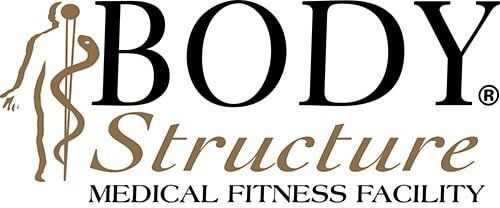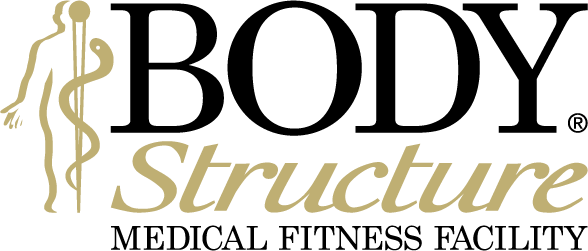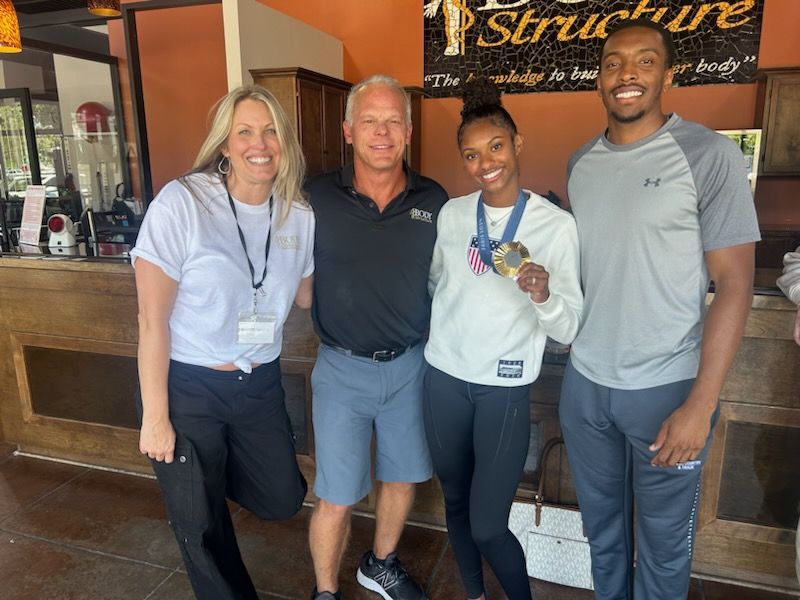BODY STRUCTURE 6 WEEK STARTER PLAN
Consult your physician before starting any exercise program. If you experience any pain performing an exercise, stop immediately and consult a trainer.
It might be a cliché, but there’s nothing wrong with finally deciding to get in shape at the start of the New Year. There are, however, two primary problems to address if you aim to avoid becoming one of the much-maligned “January Joiners” who never see their gym after February:
- Thousands of results greet an online search for “fitness program for beginners”, many of which seem to have a completely different idea of “beginner” than what you had in mind.
- You’ve heard one too many times that new workout programs are doomed to fail, and that you’ll peter out after a few weeks when you don’t see the results you want.
Well, we here at Body Structure will have none of that!
The program developed for a college kid to look good on spring break doesn’t really fit the 53-year-old with bad knees who just wants to stay off cholesterol medication. Perhaps even more discouraging is looking at exercise programs aimed at “older adults”: getting up and down from chairs and gingerly hoisting a 3 pound dumbbell a few times. The vast majority of people fit somewhere in between, and this where the Body Structure 6 Week Starter Plan comes in.
This program is for the beginner new to exercise, or for anyone who wants to get back to the basics. Its purpose is to improve one’s general fitness in three key areas: strength, body composition, and joint mobility. That being said, it is not a “lose 30 lbs fast” or “build Titanic triceps” type of program. Think of it more of a “kickstarter”: whatever you want to do after you’re finished (lose more weight, get bigger arms, run a marathon, or what have you) you’ll be in a much better position to do it thanks to the foundation of fitness you will have built. It’s also great for anyone who simply wants to be able to get on the ground and play with their kids or clear those boxes out of the attic without getting winded or hurt.
The Body Structure 6 Week Starter Plan is designed with 2 gym workouts per week in mind, ideally at least two days apart (Monday/Thursday, Tuesday/Friday, etc.) Each workout, start to finish, should take no more than 45 minutes.
Below are all of the exercises used in the program. They have been selected because they are easy on the joints while also being flexible enough to be as challenging as they need to be. The warm-up is quick and simple while also increasing the blood flow to and flexibility of every joint in the body, cranky or otherwise. The resistance training will build muscle and strength without breaking down joints or spending weeks perfecting technique before its safe to touch a weight. The cardio is straightforward and effective. On top of everything, there is a clear system of progression, so that you can definitively look back on six weeks of progress and realize how far you’ve come.
Click the exercise name for a video demonstration
Warmup
Resistance Training
Cardiovascular Training
-Treadmill uphill walking
-Bike or Elliptical
Here is a printable pdf file of the workouts:
Click here for the 6 weeks starter program pdf.
Some notes on how the program is structured:
-This program is based on the “R6” structure adapted by Body Structure. The labeling of each section may be unfamiliar to you. “Release” refers to foam rolling and soft tissue work, which are not introduced in this program, so you don’t have to worry about that. The “Reset” section is for exercises meant to improve your posture and pelvic positioning, and this is where the 3 Month Position goes. “Readiness” is our true warmup section, designed to get you mobile and get the blood flowing. “Resistance training” is your weightlifting and strength work. Finally, the “Resiliency” is your cardiovascular training. The final “R”, in case you were wondering, is Recovery.
-You’ll do the warmup (the Reset and Readiness) before every session, and once per day on non-workout days. It requires no equipment and minimal space, and doing it daily will drastically improve the way your joints feel by the end of the 6 weeks.
-Never hold your breath during the warmup mobility exercises. Instead, exhale and relax through the “sticky” parts of each stretch. Increasing flexibility requires one to ease into new ranges of motion, which requires breathing to be fluid and slow.
-The “sets” listed for each exercise refers to “hard” sets; that is, sets that feel like at least somewhat of a challenge. You may want to do a warmup set or two for unfamiliar exercises, or ones that involve any creaky joints, and those don’t count towards the listed sets.
-The resistance exercises are performed in pairs. You’ll see A1 and A2, which refer to the two exercises you’ll do together first. After you finish all the sets of A, you’ll move on to B1 and B2. Each workout ends with a single ab exercise, labeled C.
-You’ll notice that the reps increase each week for most exercises, then drop again on week four. This is by design. Find your “working” weight on week one, then stick with it for more reps on weeks two and three. Increase the weight on week four and start the process over.
-The cardio at the end (located in the “resiliency” box) should be performed at “just above comfortable” pace. You should walk a bit faster than your normal gait on day A, and pedal the bike or elliptical machine a bit harder than feels easy on day B. You don’t have to sprint, but it shouldn’t be a saunter either.
-Ideally, you should perform two additional cardio sessions on non-workout days, lasting for about 20 minutes. This can be done on a machine in the gym or simply a brisk walk outside.
Before you get started
So how do you know if the program worked? The best way is to do some pre-and post- testing to get some objective data on what kind of shape you’re in. Here are the three tests we recommend you do before you start the program, with the expectation that you’ll see an improvement on the re-test at the end.
-Plank test: get into a plank position, which is on your elbows with your legs straight and your shoulders, hips, and heels all in a straight line without your lower back sagging. Done correctly, you should feel your abdominal muscles and your shoulders holding you up. See how long you can hold this position without dropping or feeling pain. Most beginners start at somewhere around 30 seconds, but you should aim to double your time or last 2 minutes, whichever comes first, by the end of the program.
-Carry test: take a dumbbell or kettlebell, wrestle it up to underneath your chin in the “goblet” position. Stand tall, brace your abs, and get your elbows underneath the weight. Make sure you are not letting your back bend backwards. See how far you can walk without losing your position or feeling pain. Your goal by the end should be to carry a heavier weight or carry the same weight a longer distance.
- Sitting to Rising test: sit down on your rear end on the floor, then stand back up. Your goal is to use as few supports as possible in both directions. Your hands, knees, shins, your hand on your knee, etc. all count as a support. Every support you use takes a point away from 5 on the way down, and a point away from 5 on the way up, for a maximum total of 10. For example, if you get on the floor using one hand, and get up using a hand and a knee, that would be a score of 4 on the way down, and a score of 3 on the way up, for a total of 7.
Lastly, some keys to success with this –or any- program:
-Commit to finishing. Tell people you’re starting the program; better yet, get someone to do it with you.
-Do the warm-up every day. Run through it a few times, if you can.
-Do the exercises listed, in the sets and reps provided. If an exercise hurts or doesn’t feel right, don’t give up: shoot me an email at justin.gibson@bodystructure.com and I’ll help you find a better one.
-Don’t skip the cardio. It does wonders for your energy levels outside of the gym and you feel a difference in how you feel at the end of your workouts.
-Use challenging weights. You shouldn’t pick a weight you’re not sure you can do, but you shouldn’t use the lightest weights you can find for every exercise, either.
-Aim to improve every workout. It’s written into the program, but don’t be afraid to add reps or weight if you think something is too easy.
If you have any questions or want to team up with other people to help you on your fitness journey, leave us a comment, like our Facebook page, or stop in to our facility and speak with a Body Structure representative today.
Happy lifting!






















